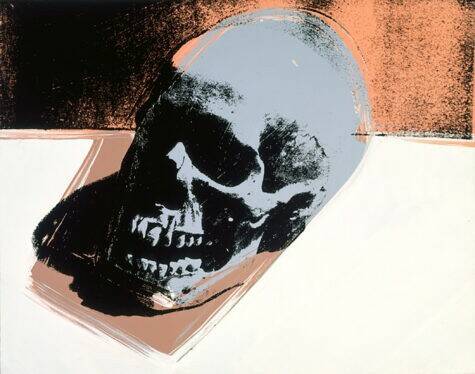'Andy Warhol: Vanitas' exhibit explores artist's deeper, darker side
Pittsburgh native pop artist Andy Warhol may be best known for his colorful screenprints of celebrities, but there was also a deeper, darker side to the prolific and eccentric figure.
“Andy Warhol: Vanitas” opens Friday at the Andy Warhol Museum on the North Side, giving viewers a glimpse at Warhol’s preoccupation with death, the fleeting nature of beauty and his own mortality through his work and objects from the artist’s life.
“Vanitas” is an art term that encompasses a genre of still life painting popular in areas including the Netherlands in the 16th and 17th centuries. The paintings were often symbolic in nature and represented the fleeting nature of life.
Former Warhol Museum director Patrick Moore curated the exhibit in collaboration with the SCHUNCK museum in the Netherlands, where “Andy Warhol: Vanitas” was previously on display, containing objects and pieces from the Andy Warhol Museum’s collection.
At a media preview on Thursday, Moore said that Warhol was faithfully Byzantine Catholic throughout his life, which also influenced his view of life and death.
“He was very much always aware of mortality,” Moore said.
Fabian de Kloe, artistic director at the SCHUNCK museum, said that the museum is located in a former mining region of the Netherlands.
“We had come across, of course, the work of Andy Warhol, not only from the history of art, but also from the perspective of his background in Pittsburgh, being the son of a mining family,” de Kloe said.
The exhibit is housed in galleries on both the second and fourth floors of the museum. Entering the exhibit on the second floor gives an immediate, striking view of one of Warhol’s later self-portraits.
“Andy appears almost like a ghost, very spectral, very gaunt, having a lot of health problems at the time. … Warhol really had, at that point, transformed everything about himself into a work of art,” Moore said of the painting. “It’s a reminder that Warhol, as a physical presence, was quite fragile towards the end of his life.”
The exhibit also contains a collection of objects from Warhol’s time capsules, including personal objects such as wig tape, toiletries, letters and random items — the artist was a prolific collector.
“Warhol didn’t really censor himself; he kept everything,” Moore said.
Also represented are examples of Warhol’s films, including “Sleep.” The six-hour film was recorded while Warhol watched his lover, John Giorno, sleep. Moore and de Kloe said that the inclusion of moving film evoked slowing and freezing time.
Such a show requires the inclusion of works from Warhol’s “Death and Disaster” series, as well as plenty of skulls. Andy Warhol purchased his inspirational skull at a flea market in Paris, and it became quite famous through sketches, photographs and especially the large painting on display on the fourth floor within “Vanitas.”
The massive painting is juxtaposed against a much smaller photograph of the skull.
“Whether this story is true or not, it’s been repeated a million times and it’s a good story: Warhol supposedly envisioned the skull so that it would capture this shadow, and the shadow is in the shape of a baby’s face. … It becomes a painting not just about death, but birth and perhaps life after death,” Moore said.
Tying Warhol to the concept of vanitas is a display about Warhol’s August 1956 visit to the Rijksmuseum in Amsterdam. His tickets and receipts from that trip are on display just in front of a 17th-century oil painting that would have been hung at the Amsterdam museum the very day Warhol was there.
“Of course, we can never know for certain that he actually stood in front of this painting at the Rijksmuseum,” said Cynthia Jordens, senior curator at the SCHUNCK. She believes it is plausible, though, that his visit inspired him to make his “Skulls” series.
The exhibit plays specifically with three themes: Mortality, Vanitas and Temporality. The show also contains selections of Warhol’s work that concern religion, the metaphysical and fleeting beauty.
And it’s not all deadly serious: written over the display of time capsules on the second floor is a quote from Warhol.
“I don’t believe in death, because I always think that when someone dies, they actually go uptown. They go to Bloomingdale’s, and they take a little longer getting back.”
“Andy Warhol: Vanitas” opens at the Andy Warhol Museum on the North Side on Friday. It will run through March 9, 2026. For more information, visit warhol.org.
Alexis Papalia is a TribLive staff writer. She can be reached at apapalia@triblive.com.
Remove the ads from your TribLIVE reading experience but still support the journalists who create the content with TribLIVE Ad-Free.


